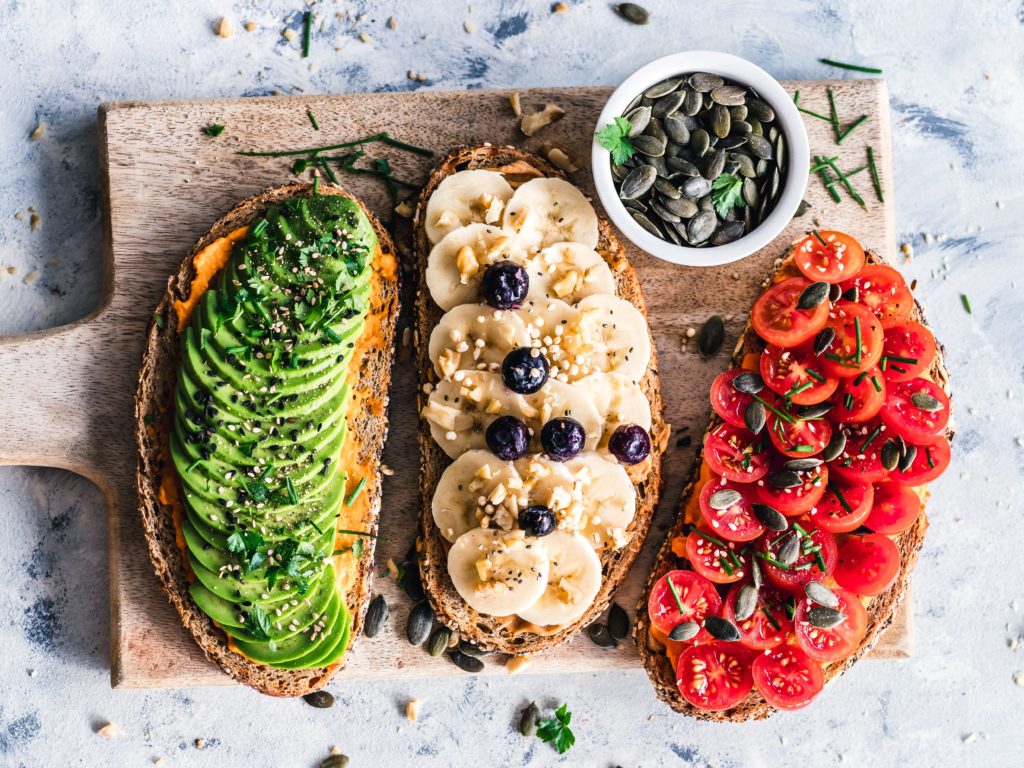Whether you’re dabbling in “Veganuary”, or have committed to a long-term diet change, here are a few tips to navigating your plant-based diet in the new year!
Stocking the Pantry
Your meals are only as versatile as your pantry, and only as flavorful as your spices!
Without the savory component of cooking with animal protein, it is important to keep your dishes easily adaptable and full-flavor by refocusing your attention on what used to be your ‘sides.’ With access to herbs & spices, and a full pantry, recreating your favorite dishes with familiar flavors will keep your taste buds satisfied, and your transition into veganism a smooth one.
Some pantries may include:
- Quinoa
- Rice
- Legumes; lentils, beans
- Pasta
- Potatoes
- Oats
- Seeds
- Nuts
- Nut butters
- Tahini
- Canned tomatoes
- Oil
- Nutritional Yeast
- Maple syrup
Checking Labels
For most, it may be easy to identify meat and dairy ingredients on a nutrition label, but to the new vegan, there are many byproduct ingredients that aren’t so transparent. Buzzwords like “gelatin,” “casein,” and “whey” can often go unnoticed, but are
certainly animal products; gelatin, from animal fat; casein and whey, from animal milk. Honey is an ingredient that may get overlooked when adapting to a new vegan diet, but requires animal production for human consumption, and is considered off-limits to most vegans. While some figs actually involve the trapping and dying of a fig wasp during the pollination process, according to Arizona State University, “…Most commercial figs, like the ones you buy at the store, are grown without wasps. Some types of figs that are grown for human consumption have figs that ripen without pollination. It is also possible to trick plants into ripening figs without wasps by spraying them with plant hormones.”
Buying the Cookbook
Creating new recipes while transitioning away from meat and dairy can seem like a daunting task. With the growing number of vegan cookbooks on the market, you can leave the experimenting to the test-kitchens. Whether you’re looking for one with a little sass (Bad Manners by Matt Holloway and Michelle Davis), prefer a minimalist approach (The Minimalist Baker by Dana Shultz), or hoping to cook to avoid common allergies (Welcoming Kitchen by Kim Lutz), there are thousands of recipes to accommodate any vegan palate at any culinary level.
Baking Substitutes
Your baking traditions don’t have to take a backseat with these great substitutions for 1 egg!
- ¼ cup applesauce (for a less dense texture, combine with ½ tsp of baking powder!)
- 3 tablespoons aquafaba (chickpea water!)
- ¼ mashed banana
- 1 tablespoon flaxseed + 2.5 tablespoons water
- ¼ cup drained tofu
In addition, maple syrup and agave are unrefined replacements for table sugar and honey that are vegan approved. Vegan chocolate chips and vegan butters are also popular replacements whether you’re avoiding an allergy or looking for a no-cholesterol option.
Avoiding Allergens
Common allergens like gluten, soy, peanuts, and tree nuts can still be avoided on a vegan diet.
Rice, hemp, pea, oat, and coconut milks are a great alternative to nut milks, and chickpea, almond, and coconut flours offer gluten-free alternatives to traditional flour.
While a few faux burgers on the market incorporate walnuts, there are many that are nut-free.
It is always best to check to ensure the product is not made in a factory that processes tree nuts. Depending on the severity of your allergy, this can be life-threatening.
There are many vegan products that contain soy, which should be avoided with a soy allergy.
Which brings us to…..
Replacing Proteins
Faux meats have come a long way and are a great transition for those cutting out animal products. Beyond Meat, Impossible Foods, Sweet Earth, Field Roast, and Big Mountain Foods are popular brands on grocery store shelves, leading the way for plant-based replacements with meat-like textures, flavors, and consistencies. It is possible, however, to avoid allergies, and get the protein you need without buying faux meat. Legumes (lentils, beans, peas, chickpeas), tofu, seitan (wheat gluten) tempeh (fermented soy), edamame (young soybeans), tree nuts, and seeds (quinoa!) are all sources of plant-based protein.
Get more like this—Sign up for our daily inspirational newsletter for exclusive content!
__
Photo: Ella Olsson via Unsplash





